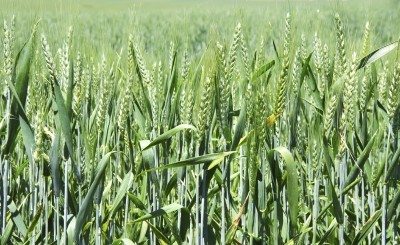
The ManicaPost

Samuel Kadungure
Senior Reporter
A BUMPER harvest beckons for Manicaland as 27 percent of the winter wheat crop has reached the critical heading or flowering stage, with farmers focusing on top-dressing and irrigating to enhance crop development, yields and profitability.
Wheat is the second most important cereal after maize in the food security basket, and Manicaland has planted 11 800 hectares – which is 108 percent of its target of 10 000ha at the closure of the extended window on June 15.
Wheat has critical stages like crop establishment, tillering, flowering and grain filling — which coincide with the optimum growth conditions when the crop is planted early.
For robust tillering, the plant produces secondary stems (four to five weeks after crop emergence) and requires very cool conditions, while heading/flowering takes place between 60 – 90 days.
Grain filling takes place after 90 days.
On Wednesday, Manicaland provincial agronomist, Mr Cephas Mlambo said identifying wheat growth stages is important to enable farmers to make timely crop management decisions that maximise yields and profitability.
“We planted more than 11 800ha of wheat this season, against a target of 10 000ha by the close of the planting window. This was about 108 percent of the target.
“About 12 percent of the wheat crop is at the crown root development stage, 61 percent is at the tillering stage while 27 percent is at heading or flowering stage.
“Currently, we are advising farmers to continue irrigating their wheat crop so that soil moisture is kept at field capacity every time. Also, farmers should top dress their crop to enhance crop development and productivity. They should always scout for pests, diseases and weeds to avoid unnecessary yield loss,” said Mr Mlambo.
He said there are no reports of power cuts and water shortages in the province so far, adding that their projections are pointing to a bumper harvest.
Irrigation is required to achieve a high yielding wheat crop — with the total gross amount of water required being between 450 and 600mm per ha, depending on the method of irrigation used.
After germination, irrigation must be applied to match crop water use.
On sandy soils with low water holding capacities, farmers should irrigate frequently (seven to nine-day cycles).
On clays and sandy clays with good water holding capacities, irrigation may be less frequent with larger amounts.
Irrigation is terminated when the neck of the ears/spikes/head turns yellow.
Using an average yield of eight tonnes per hectare, Manicaland is poised to harvest at least 94 400 metric tonnes of wheat.
“Our target is 8mt/ha, and an assignment to determine what is obtaining on the ground will be done soon. So far the crop is generally fairly good and quelea birds are not yet a challenge, but we are advising farmers to be on the look-out for them.
“They should scout for roosting places in their vicinity. If they identify any roosting place, they should contact us so that we relay the threat to our head office for quick reaction,” said Mr Mlambo.
Quelea birds are a perennial threat to wheat yields.
Government has acquired nine drones to cushion wheat farmers from the notorious birds and guarantee good yields and profitability.
The Presidential Inputs Scheme, which is targeting small-holder communal, old resettlement and A1 farmers has drastically improved the uptake of the winter wheat programme in Manicaland.
The scheme accounts for about 48 percent of the planted hectarage, with beneficiaries having received US$700 worth of inputs per hectare for free.
Farmers were given Compound D, Ammonium Nitrate, wheat seed and chemicals for up to seven hectares.
This has pushed the winter uptake.
About 5 249ha were sponsored through the Presidential Inputs Scheme, and the wheat is expected to be sold to the Grain Marketing Board (GMB).
CBZ has financed 382ha and AFC Bank 25ha.About 2 157ha were self-financed, while private contractors sponsored 1 223ha in the province.
The Agriculture and Rural Development Agency (ARDA) is also assisting irrigation schemes in the province in line with Government’s policy to turn them into wheat greenbelts.
About 1 196ha were planted under ARDA.
ARDA is supporting about 10 irrigation schemes in Buhera, Chipinge, Makoni, Mutare, Mutasa and Nyanga with inputs.
Nyanga has the largest planted area under ARDA (1 510ha).
Communal farmers have planted a whopping 3 225ha, with old resettlement farmers ranking third at 2 026ha.
Irrigation schemes have planted a cumulative 1996ha, while A1 famers have planted 744ha.
A2 farmers were ranked second at 3 215ha, while large scale farmers contributed a paltry 218ha.
Small-scale commercial farmers planted 151ha.
The major wheat growing district in Manicaland is Makoni.



